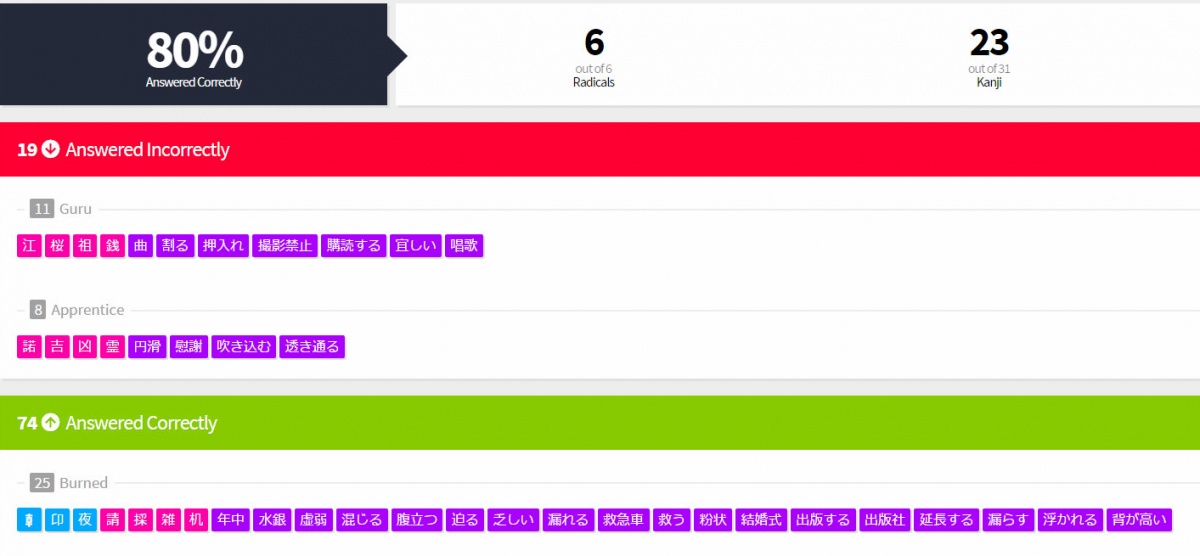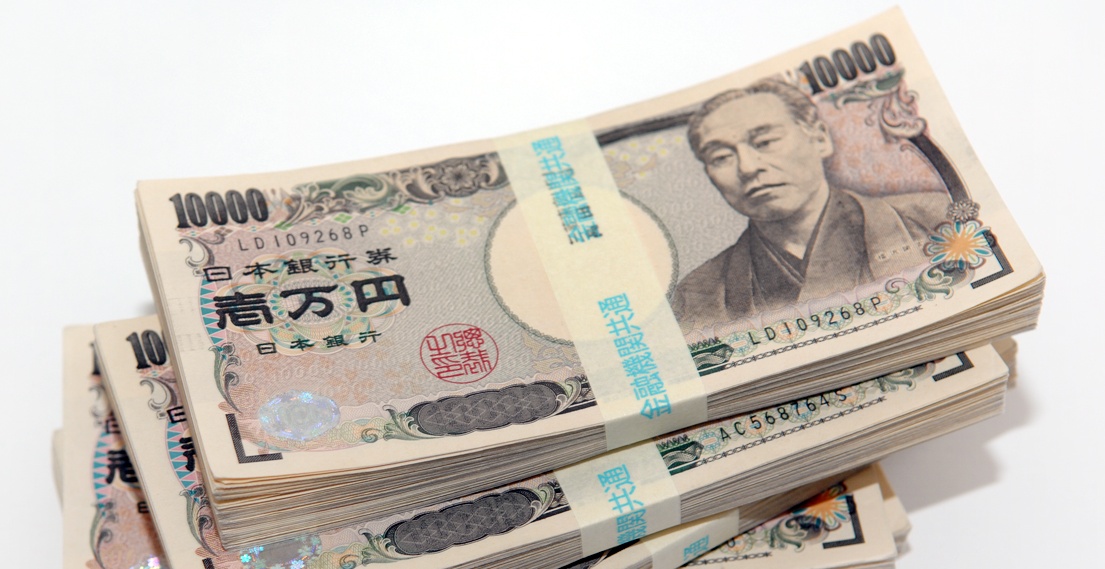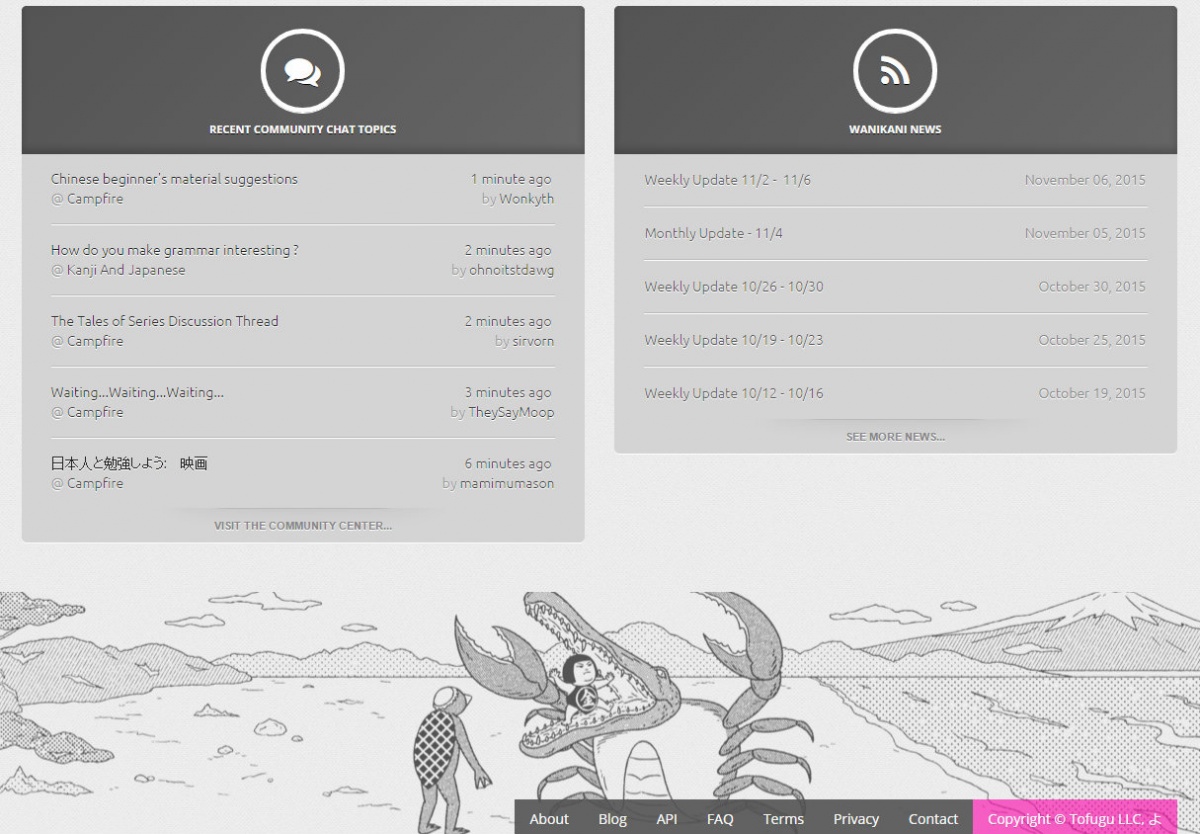7 Reasons to Love WaniKani for Kanji
Wanikani (literally “alligator-crab”) is a web application that uses mnemonics and space repetition software (SRS) to help users memorize approximately 2,000 kanji and radicals, plus over 6,000 Japanese words in two years or less.
By Todd Phillips7. It’s Ordered
https://www.wanikani.com/
To be able to use Wanikani, the user must be able to read both hiragana and katakana. There are 60 levels of kanji, radicals and vocabulary to complete, with each level carefully ordered, starting with the easiest and most useful kanji.
Each level starts with lessons. These lessons consist of radicals, which are introduced first, then the kanji that utilize these radicals, followed by the corresponding vocabulary.
6. Brilliant Mnemonics

http://moviepilot.com/posts/2115905?lt_source=external,manual
Every new item uses a mnemonic to help you remember. Herein lies one of Wanikani’s major draws. The mnemonics employed are very creative, and contain enough wacky humor for the item to remain in your head indefinitely.
Each Kanji has two mnemonics: one for the meaning and one for the reading. For example, 駐(resident). When learning this kanji, you will have already been taught the radicals, which are 馬 (horse) + 主 (master). Below are the two mnemonics that you will see:
MEANING MNEMONIC:
A horse is your master and you are merely a resident in his house. How did this horse become your master? Those aren’t questions a resident should ask! Know your place, resident!
READING MNEMONIC:
To prove yourself a worthy resident of the horse master’s house, you must capture Chewbacca (ちゅう = chu, the kanji's on-yomi). Your horse master collects rare creatures, and Chewbacca is his latest desire. If you wish to remain a resident of the house, you must capture Chewbacca.
Genius! Many of WaniKani's references nod to easily remembered people, places and pop culture powerhouses. With these and more, there’s no shortage of humorous stories fashioned just like the one above. The more over-the-top the mnemonic is, the more the item will stick in your memory.
5. Adaptive Testing

https://www.wanikani.com/signup
Once lessons are concluded, you will be given a practice quiz. Then the items learned will go into your review list.
With the SRS system, reviews will periodically pop up to test you. If you get an item right, it will be tiered up and you won’t see it for a duration of time. Eventually, items are “burned” and will no longer be up for review. If you get an item wrong, however, it will be tiered down and will appear more often in your reviews. With each successful review of an item, more vocabulary is introduced and you’re able to move up through the levels.
4. Progress Dashboard

https://www.wanikani.com/signup
To keep track of your progress, you can conveniently check your dashboard, which shows exactly which items are being nailed and which ones need more study.
3. It’s Cost Effective

http://blogs.yahoo.co.jp/minami_2950/11263423.html
Wanikani offers a trial period, with the first three levels being free. After that, though, it costs US$80 for a yearly subscription—relatively inexpensive in relation to just how many kanji you’ll be able to read and understand after one year.
On the downside, if you already have a few kanji under your belt, there’s no way to skip the lower levels, and you have to start from the beginning like every other user.
2. Community Forum

https://www.wanikani.com/signup
To further your learning experience with Wanikani, there’s a forum on the site where any—and every—question that you may have can be answered and discussed within the Wanikani community.
1. It Forces You to Study
If you’re serious about kanji study, then Wanikani is for you. It saves time by providing you with a structured curriculum to follow.
All you need to do is to keep up to date with your lessons and reviews. Reviews are easily manageable at lower levels, but beware of increasing quantity and frequency of reviews as you progress. If you should miss a day or two, don’t be surprised to find 400-plus reviews waiting for you!
And that is the beauty of Wanikani: it forces you to study every day, which is essential if you want to master kanji.
Stick with Wanikani, and you’ll be rewarded with the ability of finally being able to start understanding Japanese news or figuring out what’s been getting delivered to your mailbox every week. And what a difference that will make to your living experience in Japan!


